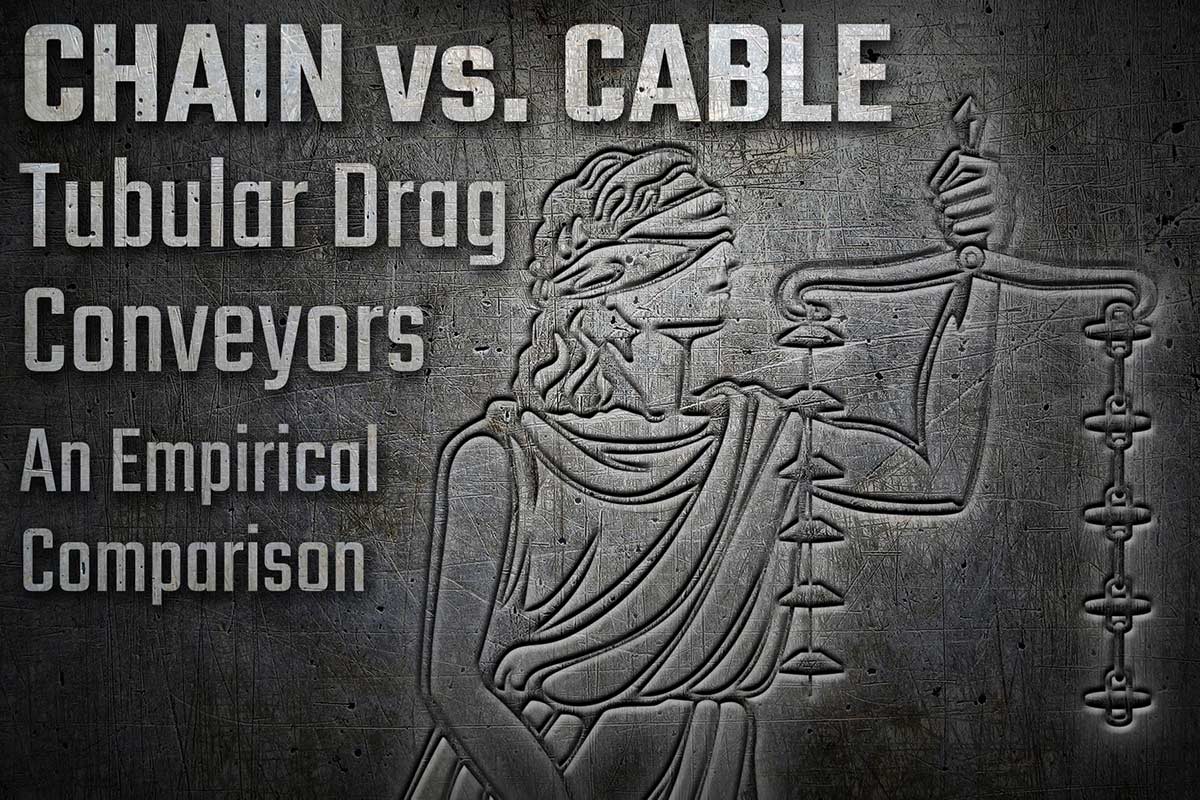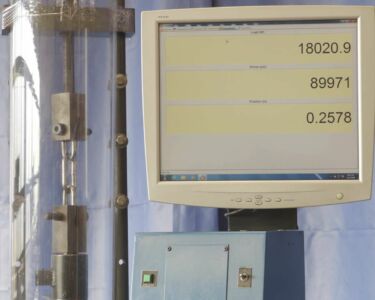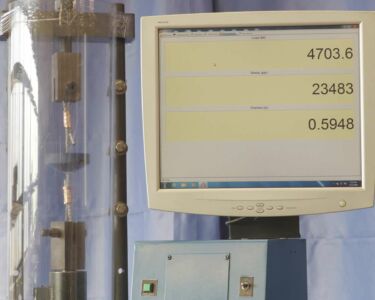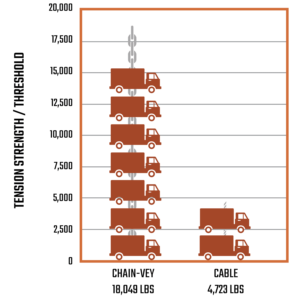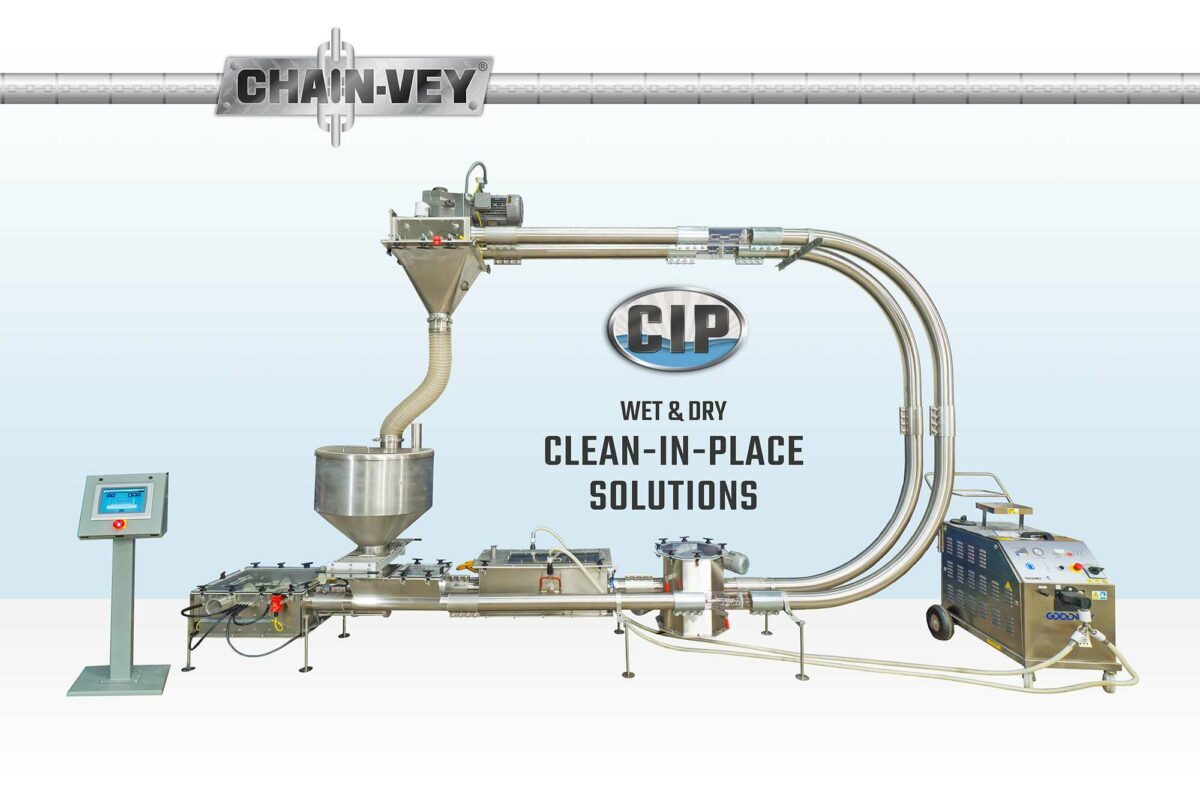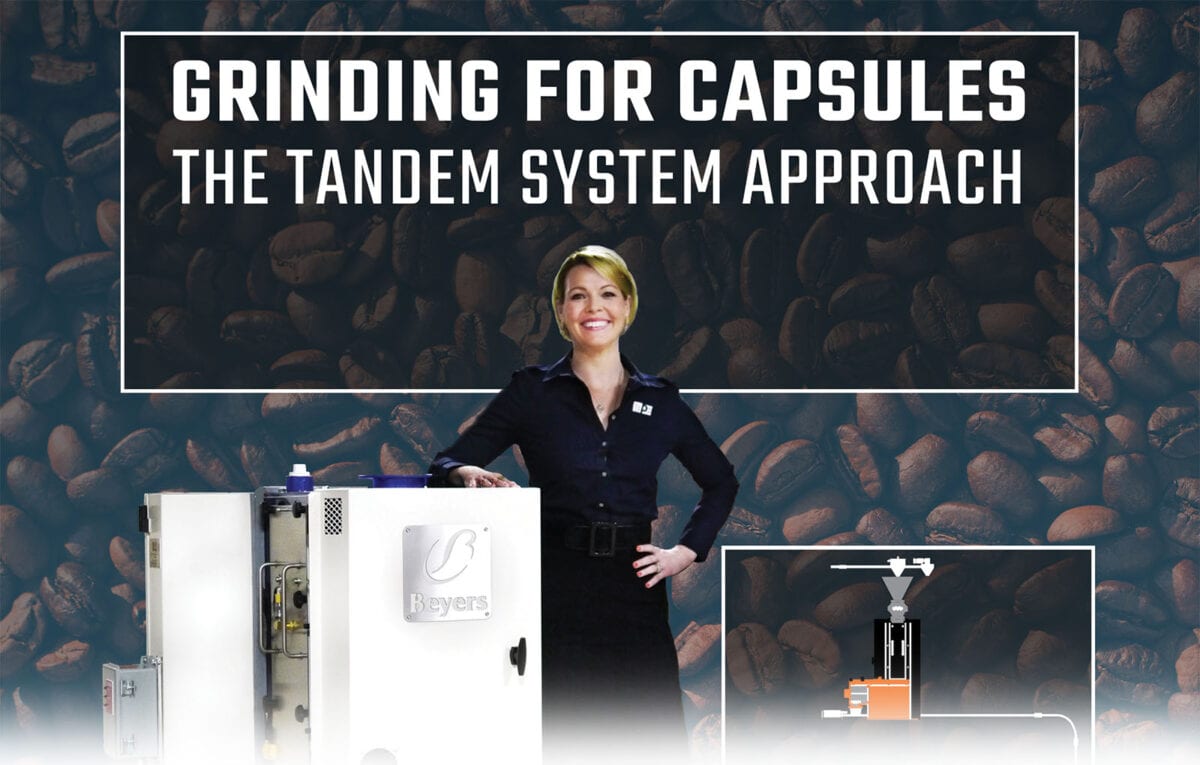Andrew Willse, Brian Willebrand, Dan Ephraim
Modern Process Equipment Corp.
Abstract
In this research we examine the tensile strength of Chain-Vey’s round link chain; a leading tubular drag conveyor in numerous applications, against cable from a leading tubular cable conveyor manufacturer. Data confirm that chain yields multiple times higher tensile strength and lower stretching, which suggest lower lifetime maintenance costs. Results may also suggest reduced harborage points for total conveyor cleanliness and improved customer satisfaction.
1 Introduction
The market for tubular drag conveyors is competitive. Markets such as pet food, grain, finished food, nuts, powder and bulk solids producers and many others look for conveyors that can gently transport their products from various points in the production process. These markets desire conveyor reliability, low maintenance, and an inherently sanitary design.
Marketing claims are in abundance, muddying the information available for would-be buyers of tubular drag conveyors as to what the tensile limits of cable and chain really are. One piece of marketing literature makes the claim that cable is strong and reliable; because elevators, suspension bridges, and aircraft control systems operate using cables.1 However, this association is empirically meaningless. Neither can testimonials nor customer surveys provide any measurement of strength. Only empirical, controlled tests—repeatable and independently verifiable—are useful for objective buyers to know how cable and chain compare in terms of strength.
2 Methodology
To compare the strength of chain and cable samples, a tension-applying machine is used. Samples used were Chain-Vey 4” diameter (diameter of the discs) chain stock, and cable also used for 4” diameter systems. Both samples were new, unused product. The chain links were attached (Figure 1) taking advantage of the inherent anchor points for each end of the tension machine. For the cable sample (Figure 2), in order to secure it, crimping consistent with actual cable conveyor crimps was done. Both samples were measured separately, with the machine applying measured force at the same rate. Stretching and tensile strength are recorded, until the point of link breakage or snapping of the wire. Analysis of both samples is done, as well as analysis of video recordings.
3 Results
Results are significantly different between the samples. The Chain-Vey chain sample carried tension until 18,049 lb, then broke, ending the experiment. The cable sample snapped at 4,723 lb. In short, chain was 3.8 times stronger than cable.
4 Limits and Considerations
4.1 Tensile Strength Over Time
This experiment was done in a controlled environment with brand new samples. It stands to reason the wear over time could affect the tensile strength of either medium (chain or cable). However, cable may be susceptible to failure much earlier due to fatigue because its headroom is lower than that of chain.
4.2 Tensile Strength and Cost and Satisfaction
With increased tensile strength, chain tubular drag conveyors may yield a lower cost over time compared to cable conveyors. The data suggest this because a lower likelihood of sudden chain breakage due to starting the conveyor under full load exists compared to cable. In such an event, loss of conveyor downtime can dwarf all other costs and savings for many operators. Chain’s reduced chance of sudden downtime contributes to higher long-term satisfaction over cable.
4.3 Tensile Strength and Potential Sanitation
Chain’s high tensile strength is due to the impervious nature of solid steel that forms each link. Cable, as used in this experiment, is twisted strands of wire. Over the course of a cable’s lifespan, the potential of degradation of individual wires exists. Difficult to detect and often too small for the human eye to see, strands of degraded cable wire may present safety concerns, as well as a harborage point for allergens, bacteria, and cross-contamination of ingredients. While this experiment does not test these concerns, it can be suggested by the higher tensile strength and integrity of the chain links under stress that chain’s level of sanitation remains constant.
5 Conclusion
Results of this controlled experiment show that chain, as found in Chain-Vey tubular drag conveyors, is significantly stronger than that of comparably sized cable found in a leading cable conveyor manufacturer’s system. All other factors were controlled for.
Regarding chain’s longer lifespan, lower cost, and lower susceptibility to harboring contaminants, findings from this experiment are consistent with these claims. However additional research is needed to support these claims.
1 Seidel, K. (2020, April 22). Tubular drag conveyors: Cable vs chain systems.

